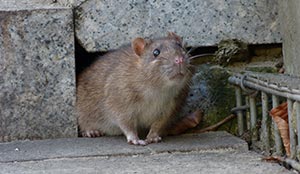 Insects aren’t the only pests that invade Pacific Northwest homes. Rats and mice also invade homes in search of food and shelter, especially in the winter. However, determining which rodent has moved into your space isn’t always easy. This is why we at Interstate Pest Management have come up with this guide to understand the differences between these rodents. Keep reading to learn more!
Insects aren’t the only pests that invade Pacific Northwest homes. Rats and mice also invade homes in search of food and shelter, especially in the winter. However, determining which rodent has moved into your space isn’t always easy. This is why we at Interstate Pest Management have come up with this guide to understand the differences between these rodents. Keep reading to learn more!
Rats Vs Mice
Appearance
The blatant difference between rats and mice is their size. However, a rat that is not fully grown can look very similar to an adult mouse, so what are some distinct features that only apply to a rat?
First of all, most rats grow to be 9 to 11 inches, about 4 inches bigger than an adult mouse. Rats also have blunt, long snouts, small ears, and a long scaly tail known to leave behind grease marks on flooring.
Mice on the other hand, range in size from 5 ½ to 7 inches on average. Some of their most prominent features include their large round ears, pointed snouts, and lighter fur color.
Habits
Rats and mice not only look differently, they also have different habits. For instance, while mice can live anywhere, rats generally prefer urban areas.
When it comes to food, rats will hunt up to 100 feet away for food, whereas mice will travel within a 10 to 30 foot diameter.
Despite these behavioral differences, both rodents are attracted to grains, plants, meat, leather, and electrical wiring.
Droppings
Another common way you can determine whether or not you’re dealing with a rat or mouse is the size of their excrement. Rat droppings can either be spindle-shaped or capsule-shaped, while mouse droppings are typically shaped like a rod.
Rats also have blunt long snouts, small ears, and a long scaly tail known to leave behind grease marks on flooring. Rats can also squeeze through any opening about an inch wide and are known to take a similar path to get to their food source daily. They’re attracted to grains and meat, but will also chew through electrical wiring and insulation as their teeth never stop growing.
Damage
Both rats and mice can crawl through extremely small openings to get inside your home, and if they can’t crawl in, they might chew their way in. The incisors in their mouths never stop growing, so to keep their teeth from growing into their brains, they grind their teeth and gnaw on nearly anything they can. They may damage your furniture, books, insulation, keepsakes, and more. When they begin to chew through electrical wires, there’s a chance they can create a fire hazard.
Shelter
Mice tend to nest in warm, hidden areas located near their food. Whereas, rats prefer to burrow beneath fences, buildings, and other debris.
Reliable Rodent Control
If you’re dealing with rats, mice, or other rodents, turn to the pest control professionals at Interstate Pest Management. Serving the Portland OR and Vancouver WA area, we’ve used environmentally conscious techniques since 1963. We’ll inspect your home, identify the pest, and recommend the best solution. For more information on our pest control services, give us a call today! We look forward to working with you.